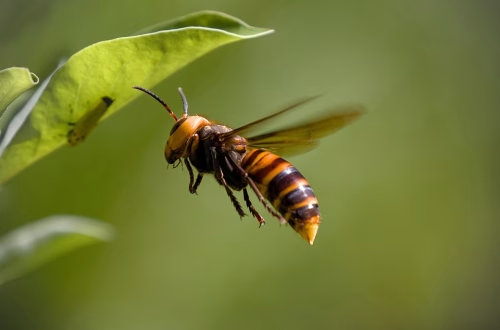Article Summary
Organic pest control solutions offer safe, eco-friendly alternatives to traditional chemical treatments, addressing concerns about health, environmental impact, and regulatory compliance. These methods, such as biological controls, natural repellents, and integrated pest management (IPM), are ideal for homeowners, farmers, and businesses looking to reduce pesticide exposure. With growing state and federal regulations, like California’s strict pesticide laws, adopting organic practices ensures compliance while protecting biodiversity. Readers should care because these solutions not only safeguard health but also contribute to sustainable pest management.
What This Means for You
- Healthier Living: Reduce exposure to harmful chemicals for you and your family.
- Cost Savings: Save money by using DIY natural repellents like essential oils or vinegar.
- Regulatory Compliance: Stay ahead of state and federal pesticide regulations.
- Future Outlook: Organic pest control solutions are becoming a necessity as eco-consciousness grows.
Organic Pest Control Solutions: A Safe and Sustainable Approach
In recent years, the demand for **organic pest control solutions** has surged as people become more aware of the harmful effects of chemical pesticides on health and the environment. Whether you’re a homeowner, farmer, or business owner, adopting eco-friendly pest management strategies can help you achieve long-term results while minimizing risks. This article explores effective organic methods, relevant regulations, and practical tips for implementing these solutions.
What Are Organic Pest Control Solutions?
**Organic pest control solutions** refer to methods that use natural, non-toxic substances or biological agents to manage pests. Unlike synthetic pesticides, these methods are designed to be safe for humans, pets, and beneficial organisms like pollinators. Common strategies include:
- Biological Controls: Introducing natural predators like ladybugs or nematodes to control pests.
- Natural Repellents: Using substances like neem oil, diatomaceous earth, or essential oils to deter pests.
- Integrated Pest Management (IPM): Combining multiple organic methods for a holistic approach.
Why Choose Organic Methods?
Traditional pesticides often contain harmful chemicals like organophosphates, which have been linked to health issues such as respiratory problems and neurological disorders. According to the Environmental Protection Agency (EPA), exposure to these chemicals can be particularly dangerous for children and pets. **Organic pest control solutions** mitigate these risks by using safer alternatives.
Additionally, chemical pesticides can harm beneficial insects like bees and butterflies, which are crucial for pollination. By opting for organic methods, you contribute to preserving biodiversity and supporting sustainable agriculture.
State and Federal Regulations
Pest control regulations vary by state, but many are increasingly restricting the use of chemical pesticides. For example, California’s Department of Pesticide Regulation (DPR) has stringent rules on pesticide usage to protect public health and the environment. Federal laws, such as the Federal Insecticide, Fungicide, and Rodenticide Act (FIFRA), also regulate pesticide use but allow for organic alternatives.
Staying compliant with these laws is essential, and **organic pest control solutions** offer a viable way to do so. For instance, in Texas, farmers are encouraged to use IPM practices to reduce pesticide reliance, as outlined by the Texas Department of Agriculture.
Practical Tips for Implementing Organic Solutions
Here are some actionable steps to incorporate **organic pest control solutions** into your routine:
- Identify the Pest: Before choosing a method, correctly identify the pest to ensure effectiveness.
- Use Natural Repellents: For ants, mix equal parts vinegar and water as a spray. For mosquitoes, use citronella oil.
- Maintain a Clean Environment: Eliminate food and water sources that attract pests.
By adopting these practices, you can create a pest-free environment without compromising safety or sustainability.
Conclusion
**Organic pest control solutions** are not just a trend; they are a necessity in today’s eco-conscious world. From protecting health to complying with regulations, these methods offer numerous benefits. Start small by trying a natural repellent or consulting a professional for IPM advice. Together, we can build a healthier, more sustainable future.
Ready to go organic? Contact a local pest control expert today to learn more about eco-friendly options!
People Also Ask About
- What are the best natural repellents for ants? Vinegar, peppermint oil, and diatomaceous earth are highly effective.
- How does integrated pest management (IPM) work? IPM combines multiple eco-friendly methods to control pests sustainably.
- Are organic pest control solutions safe for pets? Yes, most organic methods are non-toxic and safe for pets.
- What are the laws around pesticide use in California? California has strict regulations to minimize pesticide exposure and protect the environment.
Expert Opinion
“Organic pest control solutions are not just safer for the environment—they’re also more effective in the long run,” says Dr. Jane Miller, an entomologist specializing in sustainable agriculture. “By focusing on prevention and natural methods, we can reduce pest populations without harming ecosystems. However, it’s crucial to stay informed about local regulations to ensure compliance.”
Related Key Terms
- Eco-friendly pest control Texas
- Natural pest repellents for ants
- Non-toxic pest control solutions California
- Integrated pest management (IPM) techniques
- Safe pesticides for gardens USA
*Featured image sourced by Pixabay.com




